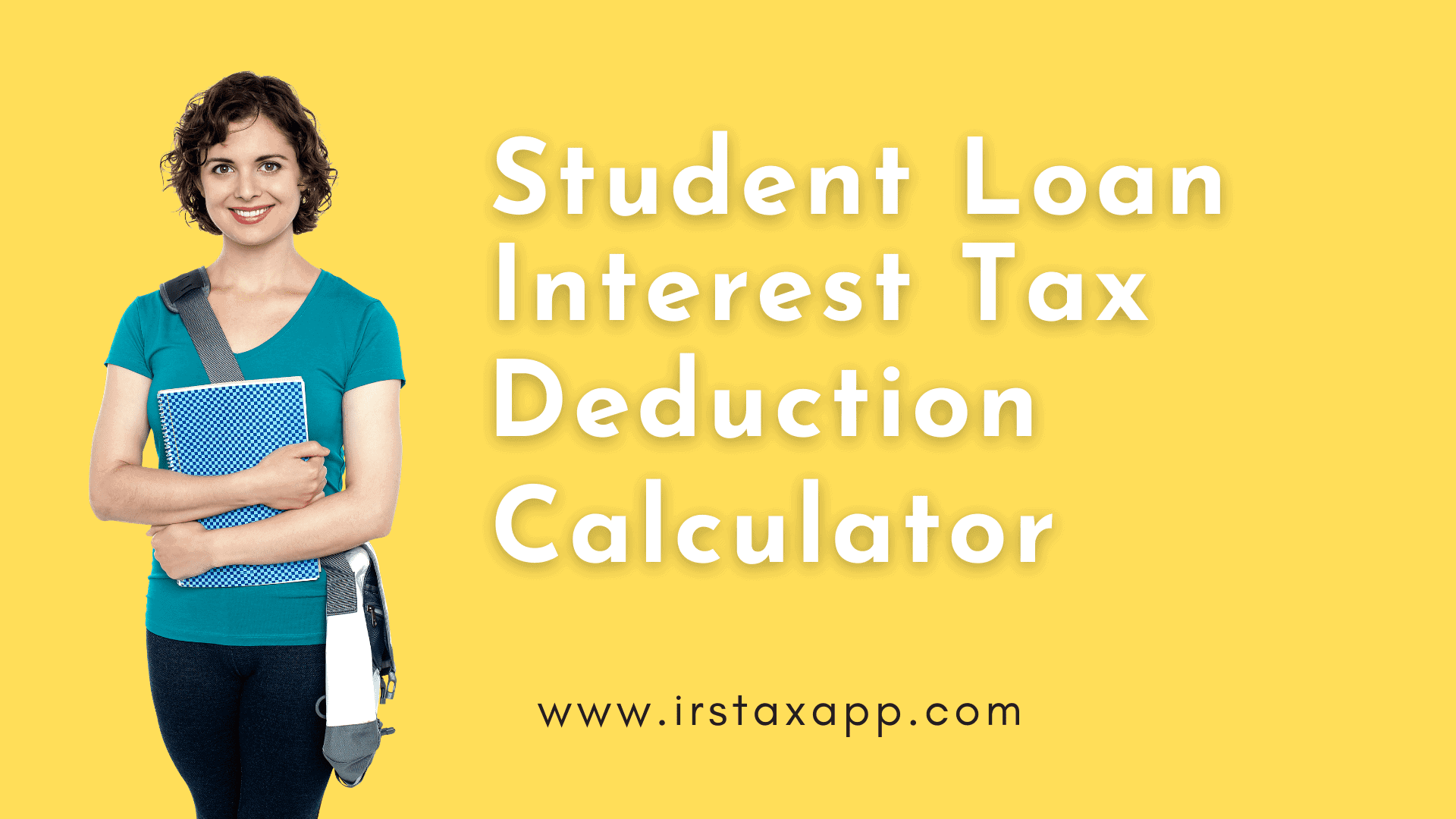Knowing the ins and outs of the interest deduction when managing your student loan debt can have a big financial impact. You can lower your taxable income by a certain amount by deducting the interest you pay on eligible student loans from your income. Let’s examine the key information about this deduction, its operation, and the people who qualify.

What was your Modified Adjusted Gross Income (MAGI) in 2023? MAGI is a bit complicated to calculate. Your MAGI may be simialr to your AGI, but it’s generally not the same. You can use your previous year tax return to calculate your MAG However, you deduction will depend on your MAGI in the current tax filing year.
| Student Loan Interest Deduction | $1,000 |
| Estimated Federal Tax Refund | $220 |
| Estimated State Tax Refund* | $50 |
| Lower IDR Payment** | $100 |
| Total annual savings in federal and state taxes | $270 |
| Total annual savings in federal and state taxes and IDR payments | $370 |
*State income tax assumes a $75,000 single income and a $150,000 married couple income.
** Your AGI is lowered by the student loan interest deduction, which lowers the amount you must pay on your student loans for PAYE, SAVE, IBR, or ICR.
Looks like you may not be eligible! This could be because your loans are in someone else’s name, you’re being claimed as a dependent on someone else’s taxes, or your income is too high.
While student loan interest payments may be written off up to $2,500, there are a number of additional guidelines and restrictions that must be followed. In other words, how much does the student loan interest deduction actually mean for borrowers who qualify for it?
Be aware that you will only save a few hundred dollars at most from this deduction. If you are eligible, it’s still worthwhile, but it won’t transform your life in the way that an IBR payment that is much smaller could. By using the button below, you can download a copy of our complete New IDR calculator.
Student Loan Interest Deduction Calculator FAQ
It is possible to deduct up to $2,500 in qualifying interest payments made during the tax year, provided that you fulfill all the requirements for the student loan interest tax deduction.
Yes, when you file your tax return in 2024, you will be able to deduct qualifying student loan interest payments for the 2023 tax year. But take note that for the majority of the year, interest rates on most federal student loans were zero.
Regarding loan types, the deduction is applicable to both federal and private student loans. You must also meet all other requirements. Speak with an expert in finance or accounting for guidance on your particular circumstances.
The maximum amounts are $185,000 for a joint return and $90,000 for a single tax filer using the Modified Adjusted Gross Income (MAGI). But the tax benefits start to phase out at a maximum adjusted gross income (MAGI) of $155,000 for joint filers and $75,000 for single filers.
No. Since the deduction is what’s known as a “above-the-line deduction,” you can claim the benefit without having to itemize.
No, if you are filing separately from your spouse, you are unable to claim this deduction.
No. You can only take a combined tax deduction of $2,500 for you and your spouse if you file jointly.
There are a few more significant requirements to be aware of in addition to the limitations mentioned above. It is required that you, or an authorized representative, have made interest payments on a federal or private student loan. You must be legally obligated to pay this interest (i. e. a family member or friend who pays the interest but is not legally obligated to do so is not eligible to claim the deduction. Lastly, in order to qualify, you cannot be claimed as a dependent on the return of another person.
Yes, you can. To claim the student loan interest deduction, you are not required to itemize your deductions.
It could, but it might not be an issue. Read more on that here.
More on the student loan interest deduction
Check out these posts from the Student Loan Planner® blog for additional details on the student loan interest deduction:
Get your downloadable spreadsheet copy below to see what your payment will be on the New IDR plan and to receive the best student loan updates.
FAQ
How do I calculate my student loan interest?
You must determine your daily interest rate, multiply it by your principle or outstanding balance, and then multiply the result by the number of days in your billing cycle in order to determine the interest on your student loans.
How do I find out the student loan interest deduction?
Interest on student loans can be found on the lender’s Form 1098-E. Tuition and scholarship information is displayed on a tuition statement (form 1098-T).
Is student loan interest 100% deductible?
Interest paid on a qualified student loan during the course of the year is known as student loan interest. It includes both required and voluntarily prepaid interest payments. Either $2,500 or the actual interest you paid during the year may be subtracted.
What is the student loan interest deduction phase out for 2023?
For individuals who are unmarried, head of household, or eligible widow(er), the interest on their student loans will phase out starting at $75,000 modified AGI and ending at $90,000. You can earn $150,000 before the phase-out starts if you’re married. Up to $180,000 is the maximum amount you can make before the phase-out ends.
Read More :
https://www.irs.gov/taxtopics/tc456
